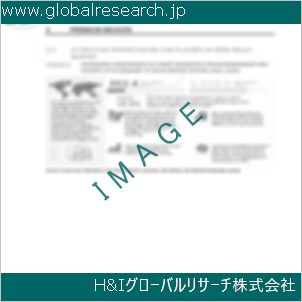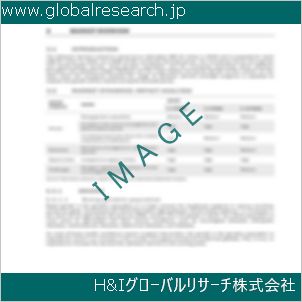Table of Contents
1 Industry Overview of Pyrimidine
1.1 Definition and Specifications of Pyrimidine
1.1.1 Definition of Pyrimidine
1.1.2 Specifications of Pyrimidine
1.2 Classification of Pyrimidine
1.3 Applications of Pyrimidine
1.3.1 Nuclear Application
1.3.2 Non-Nuclear Application
1.4 Industry Chain Structure of Pyrimidine
1.5 Industry Overview and Major Regions Status of Pyrimidine
1.5.1 Industry Overview of Pyrimidine
1.5.2 Global Major Regions Status of Pyrimidine
1.6 Industry Policy Analysis of Pyrimidine
1.7 Industry News Analysis of Pyrimidine
2 Manufacturing Cost Structure Analysis of Pyrimidine
2.1 Raw Material Suppliers and Price Analysis of Pyrimidine
2.2 Equipment Suppliers and Price Analysis of Pyrimidine
2.3 Labor Cost Analysis of Pyrimidine
2.4 Other Costs Analysis of Pyrimidine
2.5 Manufacturing Cost Structure Analysis of Pyrimidine
2.6 Manufacturing Process Analysis of Pyrimidine
3 Technical Data and Manufacturing Plants Analysis of Pyrimidine
3.1 Capacity and Commercial Production Date of Global Pyrimidine Major Manufacturers in 2023
3.2 Manufacturing Plants Distribution of Global Pyrimidine Major Manufacturers in 2023
3.3 R&D Status and Technology Source of Global Pyrimidine Major Manufacturers in 2023
3.4 Raw Materials Sources Analysis of Global Pyrimidine Major Manufacturers in 2023
4 Capacity, Production and Revenue Analysis of Pyrimidine by Regions, Types and Manufacturers
4.1 Global Capacity, Production and Revenue of Pyrimidine by Regions 2019-2024
4.2 Global and Major Regions Capacity, Production, Revenue and Growth Rate of Pyrimidine 2019-2024
4.3 Global Capacity, Production and Revenue of Pyrimidine by Types 2019-2024
4.4 Global Capacity, Production and Revenue of Pyrimidine by Manufacturers 2019-2024
5 Price, Cost, Gross and Gross Margin Analysis of Pyrimidine by Regions, Types and Manufacturers
5.1 Price, Cost, Gross and Gross Margin Analysis of Pyrimidine by Regions 2019-2024
5.2 Price, Cost, Gross and Gross Margin Analysis of Pyrimidine by Types 2019-2024
5.3 Price, Cost, Gross and Gross Margin Analysis of Pyrimidine by Manufacturers 2019-2024
6 Consumption Volume, Consumption Value and Sale Price Analysis of Pyrimidine by Regions, Types and Applications
6.1 Global Consumption Volume and Consumption Value of Pyrimidine by Regions 2019-2024
6.2 Global and Major Regions Consumption Volume, Consumption Value and Growth Rate of Pyrimidine 2019-2024
6.3 Global Consumption Volume and Consumption Value of Pyrimidine by Types 2019-2024
6.4 Global Consumption Volume and Consumption Value of Pyrimidine by Applications 2019-2024
6.5 Sale Price of Pyrimidine by Regions 2019-2024
6.6 Sale Price of Pyrimidine by Types 2019-2024
6.7 Sale Price of Pyrimidine by Applications 2019-2024
6.8 Market Share Analysis of Pyrimidine by Different Sale Price Levels
7 Supply, Import, Export and Consumption Analysis of Pyrimidine
7.1 Supply, Consumption and Gap of Pyrimidine 2019-2024
7.2 Global Capacity, Production, Price, Cost, Revenue, Supply, Import, Export and Consumption of Pyrimidine 2019-2024
7.3 USA Capacity, Production, Price, Cost, Revenue, Supply, Import, Export and Consumption of Pyrimidine 2019-2024
7.4 EU Capacity, Production, Price, Cost, Revenue, Supply, Import, Export and Consumption of Pyrimidine 2019-2024
7.5 China Capacity, Production, Price, Cost, Revenue, Supply, Import, Export and Consumption of Pyrimidine 2019-2024
7.6 Japan Capacity, Production, Price, Cost, Revenue, Supply, Import, Export and Consumption of Pyrimidine 2019-2024
8 Major Manufacturers Analysis of Pyrimidine
8.1 Manufacturer One
8.1.1 Company Profile
8.1.2 Product Picture and Specifications
8.1.2.1 Type I
8.1.2.2 Type II
8.1.2.3 Type III
8.1.3 Capacity, Production, Price, Cost, Gross and Revenue
8.1.4 Contact Information
8.2 Manufacturer Two
8.2.1 Company Profile
8.2.2 Product Picture and Specifications
8.2.2.1 Type I
8.2.2.2 Type II
8.2.2.3 Type III
8.2.3 Capacity, Production, Price, Cost, Gross and Revenue
8.2.4 Contact Information
8.3 Manufacturer Three
8.3.1 Company Profile
8.3.2 Product Picture and Specifications
8.3.2.1 Type I
8.3.2.2 Type II
8.3.2.3 Type III
8.3.3 Capacity, Production, Price, Cost, Gross and Revenue
8.3.4 Contact Information
8.4 Manufacturer Four
8.4.1 Company Profile
8.4.2 Product Picture and Specifications
8.4.2.1 Type I
8.4.2.2 Type II
8.4.2.3 Type III
8.4.3 Capacity, Production, Price, Cost, Gross and Revenue
8.4.4 Contact Information
8.5 Manufacturer Five
8.5.1 Company Profile
8.5.2 Product Picture and Specifications
8.5.2.1 Type I
8.5.2.2 Type II
8.5.2.3 Type III
8.5.3 Capacity, Production, Price, Cost, Gross and Revenue
8.5.4 Contact Information
…
9 Marketing Trader or Distributor Analysis of Pyrimidine
9.1 Marketing Channels Status of Pyrimidine
9.2 Traders or Distributors with Contact Information of Pyrimidine by Regions
9.3 Ex-work Price, Channel Price and End Buyer Price Analysis of Pyrimidine
9.4 Regional Import, Export and Trade Analysis of Pyrimidine
10 Industry Chain Analysis of Pyrimidine
10.1 Upstream Major Raw Materials Suppliers Analysis of Pyrimidine
10.1.1 Major Raw Materials Suppliers with Contact Information Analysis of Pyrimidine
10.1.2 Major Raw Materials Suppliers with Supply Volume Analysis of Pyrimidine by Regions
10.2 Upstream Major Equipment Suppliers Analysis of Pyrimidine
10.2.1 Major Equipment Suppliers with Contact Information Analysis of Pyrimidine
10.2.2 Major Equipment Suppliers with Product Pictures Analysis of Pyrimidine by Regions
10.3 Downstream Major Consumers Analysis of Pyrimidine
10.3.1 Major Consumers with Contact Information Analysis of Pyrimidine
10.3.2 Major Consumers with Consumption Volume Analysis of Pyrimidine by Regions
10.4 Supply Chain Relationship Analysis of Pyrimidine
11 Development Trend of Analysis of Pyrimidine
11.1 Capacity, Production and Revenue Forecast of Pyrimidine by Regions and Types
11.1.1 Global Capacity, Production and Revenue of Pyrimidine by Regions 2024-2029
11.1.2 Global and Major Regions Capacity, Production, Revenue and Growth Rate of Pyrimidine 2024-2029
11.1.3 Global Capacity, Production and Revenue of Pyrimidine by Types 2024-2029
11.2 Consumption Volume and Consumption Value Forecast of Pyrimidine by Regions, Types and Applications
11.2.1 Global Consumption Volume and Consumption Value of Pyrimidine by Regions 2024-2029
11.2.2 Global and Major Regions Consumption Volume, Consumption Value and Growth Rate of Pyrimidine 2024-2029
11.2.3 Global Consumption Volume and Consumption Value of Pyrimidine by Types 2024-2029
11.2.4 Global Consumption Volume and Consumption Value of Pyrimidine by Applications 2024-2029
11.3 Supply, Import, Export and Consumption Forecast of Pyrimidine
11.3.1 Supply, Consumption and Gap of Pyrimidine 2024-2029
11.3.2 Global Capacity, Production, Price, Cost, Revenue, Supply, Import, Export and Consumption of Pyrimidine 2024-2029
11.3.3 USA Capacity, Production, Price, Cost, Revenue, Supply, Import, Export and Consumption of Pyrimidine 2024-2029
11.3.4 EU Capacity, Production, Price, Cost, Revenue, Supply, Import, Export and Consumption of Pyrimidine 2024-2029
11.3.5 China Capacity, Production, Price, Cost, Revenue, Supply, Import, Export and Consumption of Pyrimidine 2024-2029
11.3.6 Japan Capacity, Production, Price, Cost, Revenue, Supply, Import, Export and Consumption of Pyrimidine 2024-2029
12 New Project Investment Feasibility Analysis of Pyrimidine
12.1 New Project SWOT Analysis of Pyrimidine
12.2 New Project Investment Feasibility Analysis of Pyrimidine
13 Conclusion of the Global Pyrimidine (CAS 289-95-2) Industry 2024 Market Research Report
| ※参考情報 ピリミジンは、化学的には環状の有機化合物であり、特に窒素原子が含まれたベンゼン環の一種です。その基本的な構造は、炭素原子が6つ、そして窒素原子が2つ含まれた合計6つの原子からなる環状分子であり、C4H4N2という化学式で表されます。ピリミジンは、さまざまな生物学的プロセスや化学反応に重要な役割を果たしており、特に核酸の構成要素として広く知られています。 ピリミジンの特徴として、まずその化学的性質が挙げられます。ピリミジンは、水に対して低い溶解性を示しますが、有機溶媒には溶けやすい性質を持っています。また、ピリミジン環は、電子を供与する能力が高く、柔軟な構造を持っているため、さまざまな化学反応に関与することができます。このことから、ピリミジンは多くの化学合成や反応の基本的な骨格となることがあります。 ピリミジンの種類には主に三つの核酸塩基が含まれ、その中にはシトシン(C)、チミン(T)、ウラシル(U)が存在します。これらは、DNAやRNAの構成要素として重要であり、遺伝情報の保存や伝達に不可欠な役割を果たしています。シトシンとチミンはDNAに、ウラシルはRNAに存在し、それぞれが特定のペアリングパートナーと結合して遺伝情報をコードします。 ピリミジンの用途は多岐にわたります。医薬品の開発においては、ピリミジン誘導体が広く応用されています。特に、抗ウイルス薬や抗がん剤など、多くの新薬がこの構造に基づいて設計されており、効果的な治療薬として利用されています。さらに、ピリミジンは、農薬や除草剤の合成にも使われており、農業分野でも重要な役割を果たしています。 技術的には、ピリミジンの合成方法が多様化しており、従来の化学合成に加えて、バイオテクノロジーを利用した新しい方法が模索されています。例えば、特定の微生物や酵素を用いてピリミジンを合成するプロセスが研究されており、環境に優しい方法となる可能性が高いとされています。このような技術進歩により、持続可能な方法で必要なピリミジン誘導体を得ることが期待されています。 また、ピリミジンはその生物学的活性から、様々な研究分野においても重要視されています。たとえば、細胞の成長や分裂に関連するメカニズムの解明や、その病理学的な研究が進行中です。特にがん研究においては、ピリミジン代謝に関連する経路が注目されており、治療のターゲットとしての可能性が探求されています。 さらに、最近の研究では、ピリミジンが関与する他の生理学的過程やメカニズムについても明らかになりつつあります。神経伝達物質やホルモンの合成、さらにはエネルギー代謝においてもピリミジンが重要な役割を果たしていることが示されています。このように、ピリミジンは単なる化学物質ではなく、生物における様々な機能に寄与する重要な成分であると言えます。 地球上の生命において、ピリミジンは核酸の一部として存在するだけでなく、細胞機能や反応においても欠かせない要素であることから、多様な分野での研究が進んでいます。今後もピリミジンに対する理解が深まることで、新しい応用や治療法が生まれることが期待されています。このようなことから、ピリミジンは生物学、化学、医療、農業など、さまざまな領域において重要な役割を果たし続けることは間違いありません。 |
❖ 免責事項 ❖
http://www.globalresearch.jp/disclaimer












